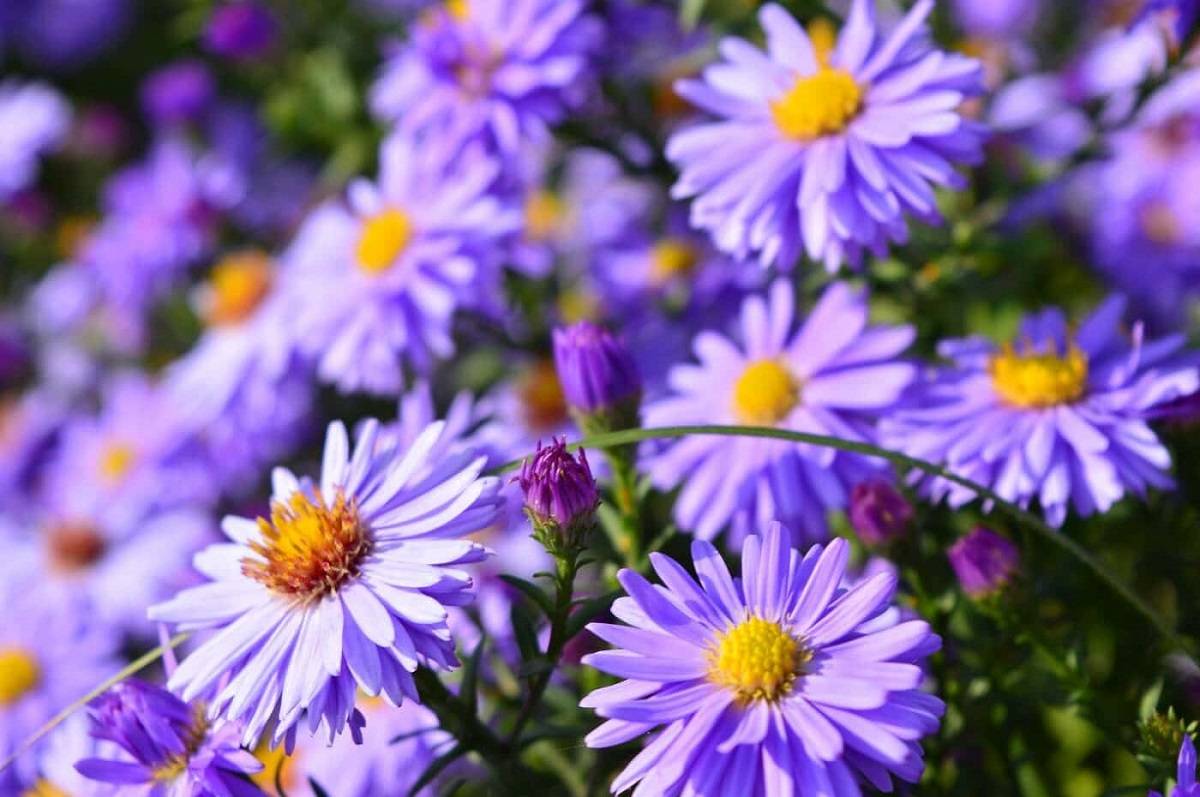
Traditionally, asters bloom in the late summer and early fall. Many garden supply stores sell potted aster plants, but you can also easily and affordably cultivate your asters from seed. Additionally, if you plant from seed, you can select from many types as opposed to only what is offered at the garden center. So why not get some seeds and give your garden some fall color?
Introduction:
The aster is a blooming perennial with a strong stem and a profusion of tiny daisy-like flowers. The Asteraceae family, which also includes chrysanthemums, daisies, and sunflowers, has several aster species in different genera. In USDA Hardiness Zones 4 to 8, most plants can grow in full sun or light shade in fairly rich, slightly acidic soil. They produce flowers in hues of blue, pink, purple, and white from late summer to early October, frequently up until frost.
Origin:
Almost 600 perennial flowers with aster-like characteristics were once categorized as asters. But in the 1990s, the botanical taxonomy was updated, and now, roughly 180 native varieties from Asia and Europe are categorized as "real" asters.
Although certain "wild type" species native to your area is not quite as flashy as the cultivated kinds in some situations, they are often a sensible choice for the ecologically conscious gardener. Several hybrid variations are available in vibrant hues.
Let us now learn how to grow and maintain aster plants:
Planting Preparation:
Full sunlight is ideal for aster plant growth. Pick a position that will receive at least 6 hours each day of direct sunlight. Aster plants require soil that drains well and is rich in organic content.
Thoroughly weed the area, loosen the soil by digging, and then add compost or old animal dung. Till planting, keep the area clear of weeds. Plants for asters can be cultivated in pots. Pick a variety that is suggested for container growth if at all feasible. Make sure your container is big enough for mature plants and that you use high-quality potting soil; a minimum container size of 10 liters is advised for aster. Remember that plants grown in containers can require more fertilizer throughout the growing season to promote healthy development.
How to Plant Asters:
Before planting, aster seeds don't need to be treated in any way (such as soaking or stratification). It is recommended to start aster seeds in trays or other containers and move them to the garden once they have established themselves.
-
Use soil starting pellets or a high-quality seed-raising mix to fill trays, punnets, or jiffy pots.
-
Plant seeds 6 mm deep.
-
Never let the soil get too dry or damp.
-
At a soil temperature of 20–25 °C, seeds should begin to sprout in about 10-15 days.
-
Once seedlings have their first true leaves and are large enough to handle, transplant them into the garden (usually 5-10cm tall).
-
Plants should be spaced 30 cm apart, and rows should be 30 cm apart.
Aster is a semi-hardy plant. Light frosts won't harm mature plants, but seedlings must be protected until they are established. Till all threat of frost has gone, postpone transplanting seedlings or planting seeds outside.
Optional: Aster seeds can be planted within six weeks before the last anticipated frost in cold areas. They should be grown in a warm environment with lots of sunlight.
How to Grow Asters?
During the growth season, aster plants can require watering. 5 cm below the surface, when the soil is dry, add water (test this by scratching away a little soil with your finger). Early in the morning or late in the day, thoroughly water. To avoid fungus illnesses, refrain from watering plant leaves.
No further fertilizer should be required if the soil was properly prepared. Application of a high-potassium fertilizer or one intended for blooming plants might be helpful in poor soil or to give your plants an extra boost:
-
When transplanting or once the seedlings are between 5 and 10 cm tall, use slow-release fertilizer at the appropriate dosage.
-
While plants are in the fruiting or blooming stages, fertilize them with liquid fertilizer at the prescribed rate and frequency.
As they develop, aster plants might need to be nurtured. To support plants, use a stake, bamboo cane, trellis, or string lines depending on the anticipated size and height of the plant. To prevent subsequent root disturbance, put the support before planting or transplanting seedlings. Plants with asters should bloom in approximately 100 days.
How to Care for your Aster?
If you feed your asters with compost and add basic fertilizer once a month, you'll get robust, colorful flowers. Mulch is a fantastic solution for preventing weed growth.
After each flush of bloom, the fading flowers are removed, the soil is scraped up, and a spoonful of compost is put into each plant to preserve the continuity of flowering.
Happy Gardening!











